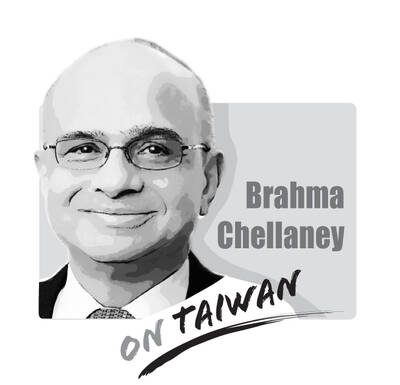The Siraya people are losing faith that President Tsai Ing-wen’s (蔡英文) administration will fulfill its promise of officially recognizing them before next year’s elections.
Since Tsai took office and apologized for the historical treatment of Aborigines, the Siraya (a subsection of the Pingpu) have waited for her to fulfill her promise of officially recognizing them.
In October 2017, the Executive Yuan approved an amendment to the Status Act for Indigenous Peoples (原住民身分法) that would recognize the Pingpu as indigenous people. For almost two years, it has languished in the Legislative Yuan without a vote.
Tsai and Premier Su Tseng-chang (蘇貞昌) have both issued statements in support of the Siraya, but little has been done to approve the amendment
The priority items for the last legislative session of the year do not include the amendment to the act, despite Tsai’s promise on June 18 that it would be a top priority.
The Siraya are looking for further guidance from their leadership, as this session represents their last attempt at official recognition before next year’s elections.
For the past 20 years, the Siraya have been working tirelessly to revitalize their language and assert their rights under the UN Declaration on the Rights of Indigenous Peoples.
They have succeeded in being recognized as an official indigenous group by the former Tainan county, and as of May last year, the Supreme Administrative Court acknowledged them as an indigenous group of Taiwan.
For the Siraya, Tsai was “a light in a dark tunnel,” Tainan Siraya Culture Association committee member Uma Talavan (萬淑娟) said.
They had high hopes that all of their efforts would finally be recognized by the national government.
Now, Uma said that “the outlook has become foggy.”
On Aug. 26, Uma and two Pingpu representatives met with Democratic Progressive Party (DPP) caucus convener Ker Chien-ming (柯建銘) to discuss the Pingpu’s recognition efforts. Despite his interest in the Pingpu struggle, he could not promise to prioritize the issue in the next legislative session.
Since the meeting took place, Uma has been contacted by various Siraya communities concerned that they will not be recognized before the next elections. They are looking for guidance as to what their next steps should be.
Many of these communities are starting to lose faith that Tsai will deliver on her promise of official recognition. The Siraya plan to protest as the last legislative session begins to encourage the Tsai administration to make right on their promise and to officially recognize the Pingpu before the elections.
A petition has been created to demonstrate the worldwide support for the Siraya and Pingpu’s identity recognition efforts.
Tabatha Keton is a graduate student from the University of California, Los Angeles. She began working with the Siraya in 2014.

Taiwan stands at the epicenter of a seismic shift that will determine the Indo-Pacific’s future security architecture. Whether deterrence prevails or collapses will reverberate far beyond the Taiwan Strait, fundamentally reshaping global power dynamics. The stakes could not be higher. Today, Taipei confronts an unprecedented convergence of threats from an increasingly muscular China that has intensified its multidimensional pressure campaign. Beijing’s strategy is comprehensive: military intimidation, diplomatic isolation, economic coercion, and sophisticated influence operations designed to fracture Taiwan’s democratic society from within. This challenge is magnified by Taiwan’s internal political divisions, which extend to fundamental questions about the island’s identity and future
The narrative surrounding Indian Prime Minister Narendra Modi’s attendance at last week’s Shanghai Cooperation Organization (SCO) summit — where he held hands with Russian President Vladimir Putin and chatted amiably with Chinese President Xi Jinping (習近平) — was widely framed as a signal of Modi distancing himself from the US and edging closer to regional autocrats. It was depicted as Modi reacting to the levying of high US tariffs, burying the hatchet over border disputes with China, and heralding less engagement with the Quadrilateral Security dialogue (Quad) composed of the US, India, Japan and Australia. With Modi in China for the
The Chinese Nationalist Party (KMT) has postponed its chairperson candidate registration for two weeks, and so far, nine people have announced their intention to run for chairperson, the most on record, with more expected to announce their campaign in the final days. On the evening of Aug. 23, shortly after seven KMT lawmakers survived recall votes, KMT Chairman Eric Chu (朱立倫) announced he would step down and urged Taichung Mayor Lu Shiow-yen (盧秀燕) to step in and lead the party back to power. Lu immediately ruled herself out the following day, leaving the subject in question. In the days that followed, several
The Jamestown Foundation last week published an article exposing Beijing’s oil rigs and other potential dual-use platforms in waters near Pratas Island (Dongsha Island, 東沙島). China’s activities there resembled what they did in the East China Sea, inside the exclusive economic zones of Japan and South Korea, as well as with other South China Sea claimants. However, the most surprising element of the report was that the authors’ government contacts and Jamestown’s own evinced little awareness of China’s activities. That Beijing’s testing of Taiwanese (and its allies) situational awareness seemingly went unnoticed strongly suggests the need for more intelligence. Taiwan’s naval